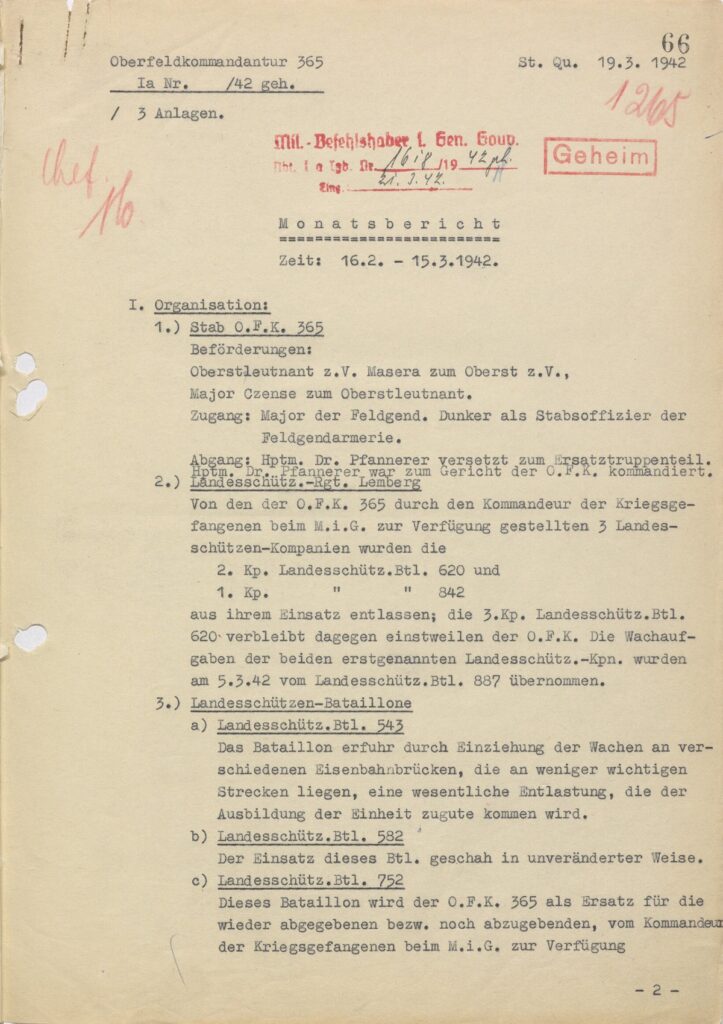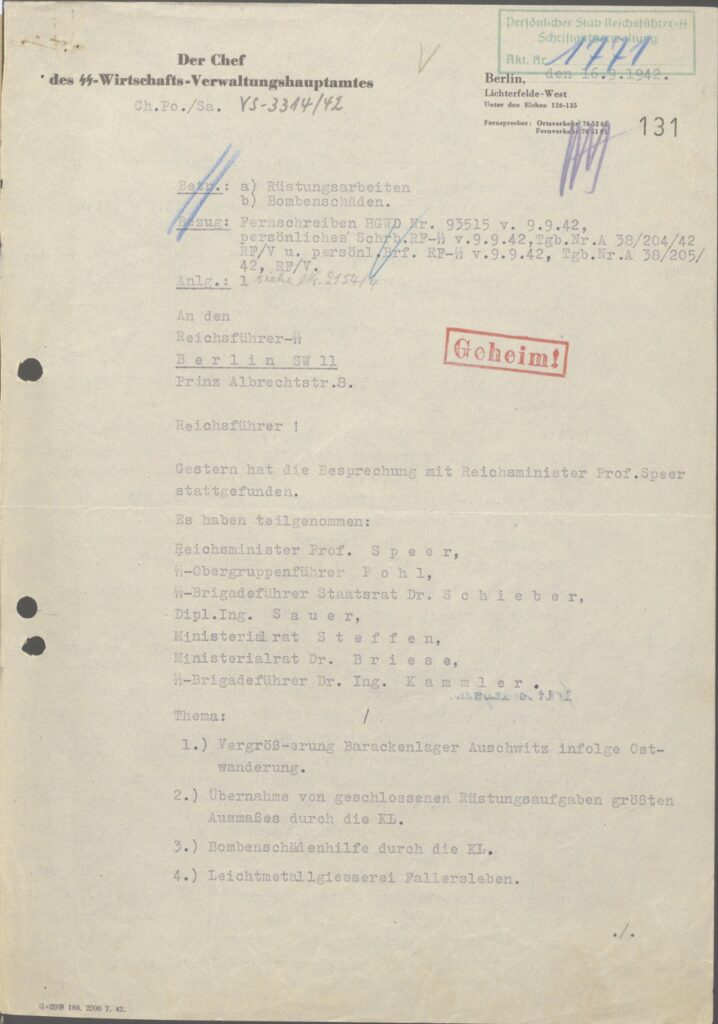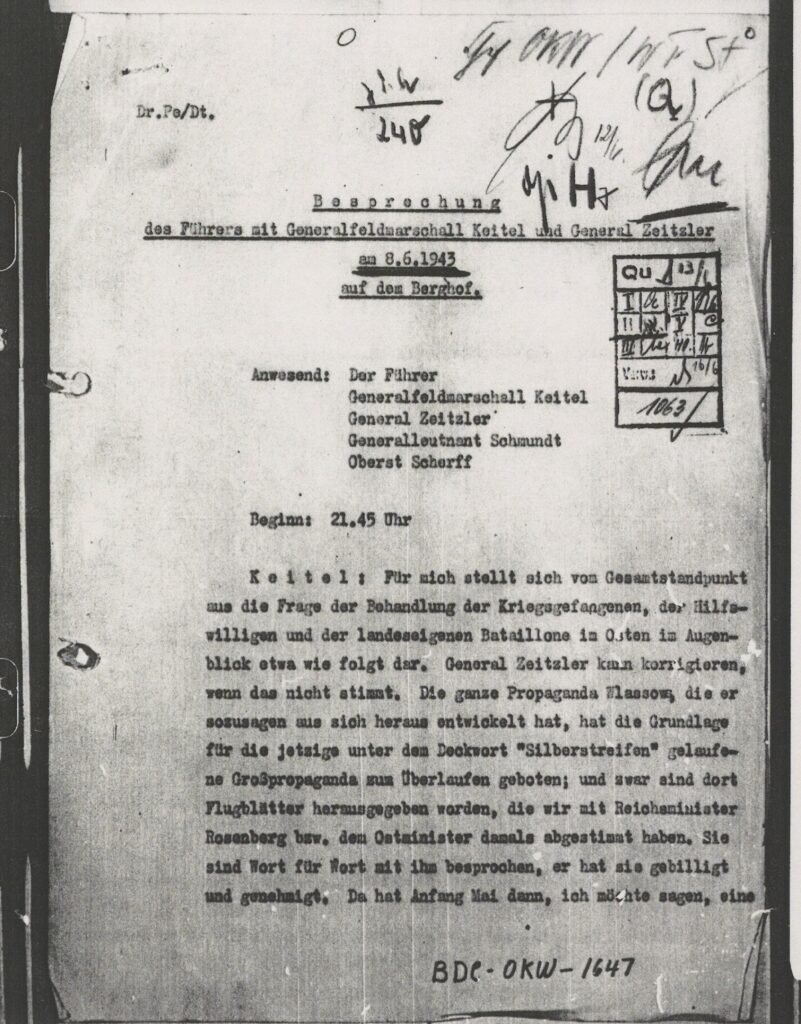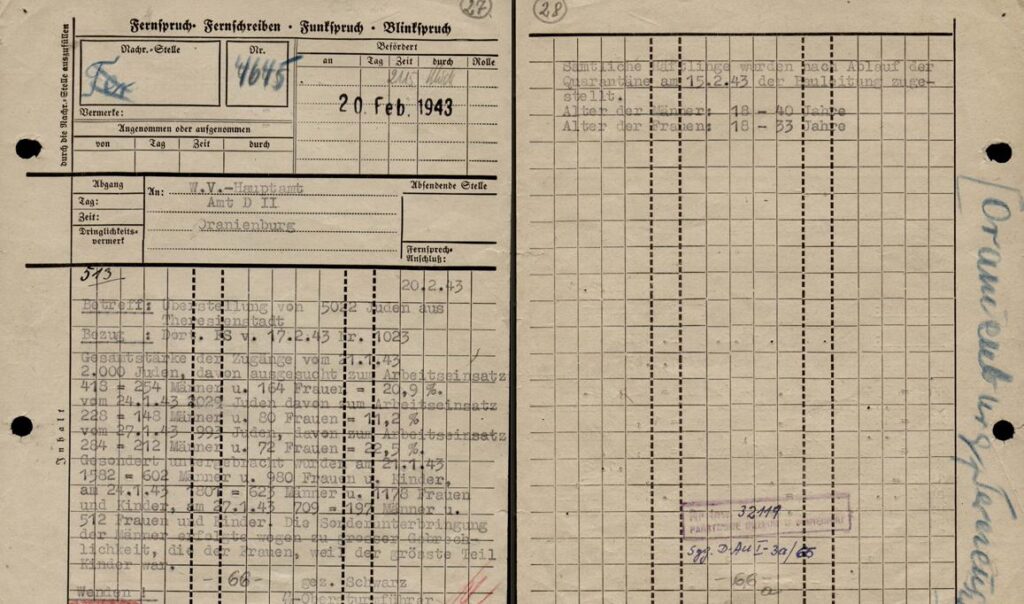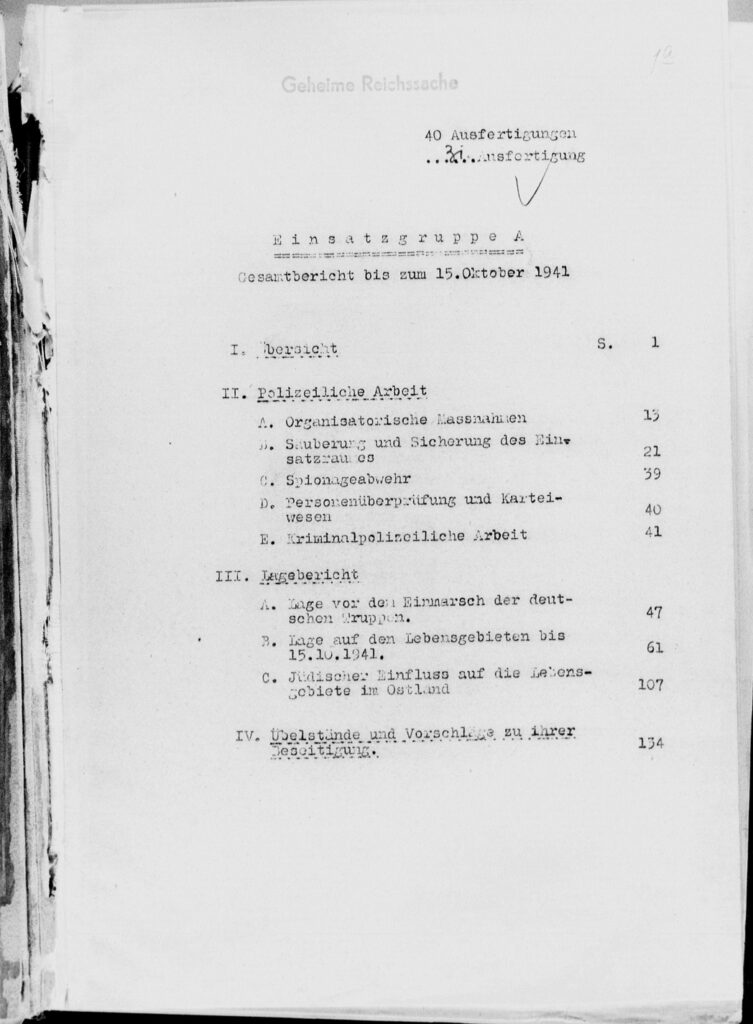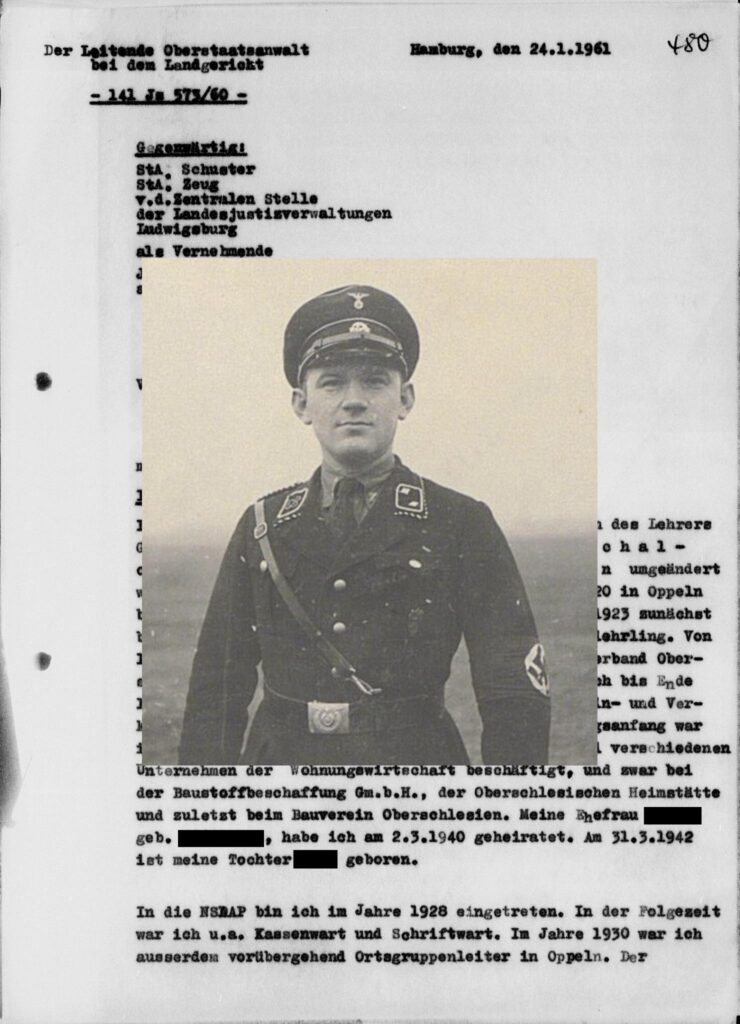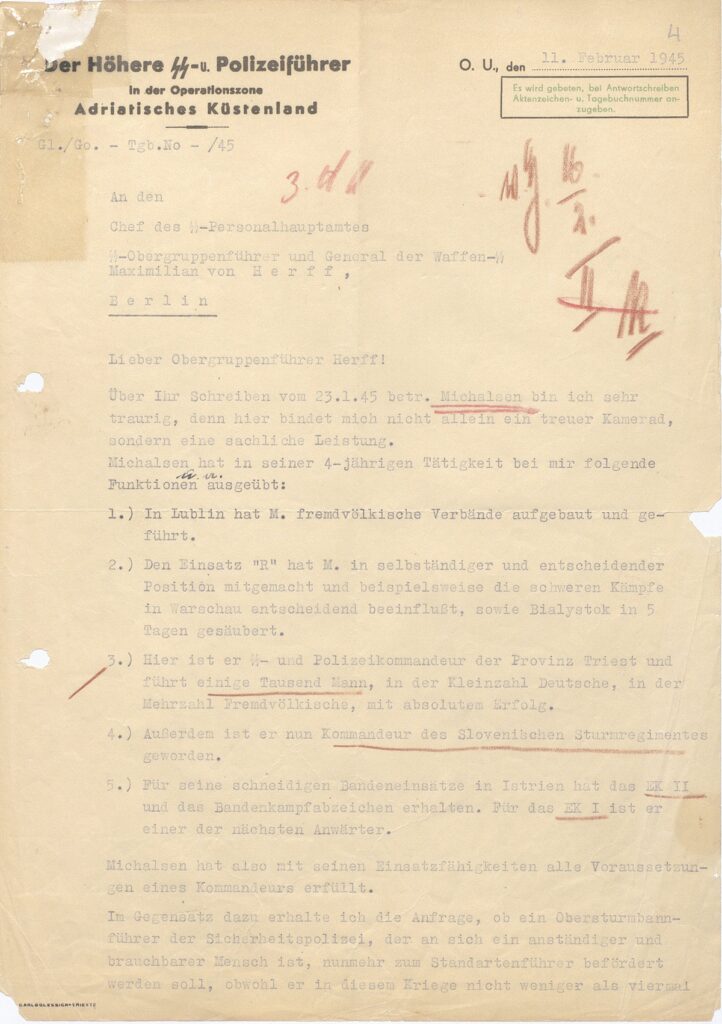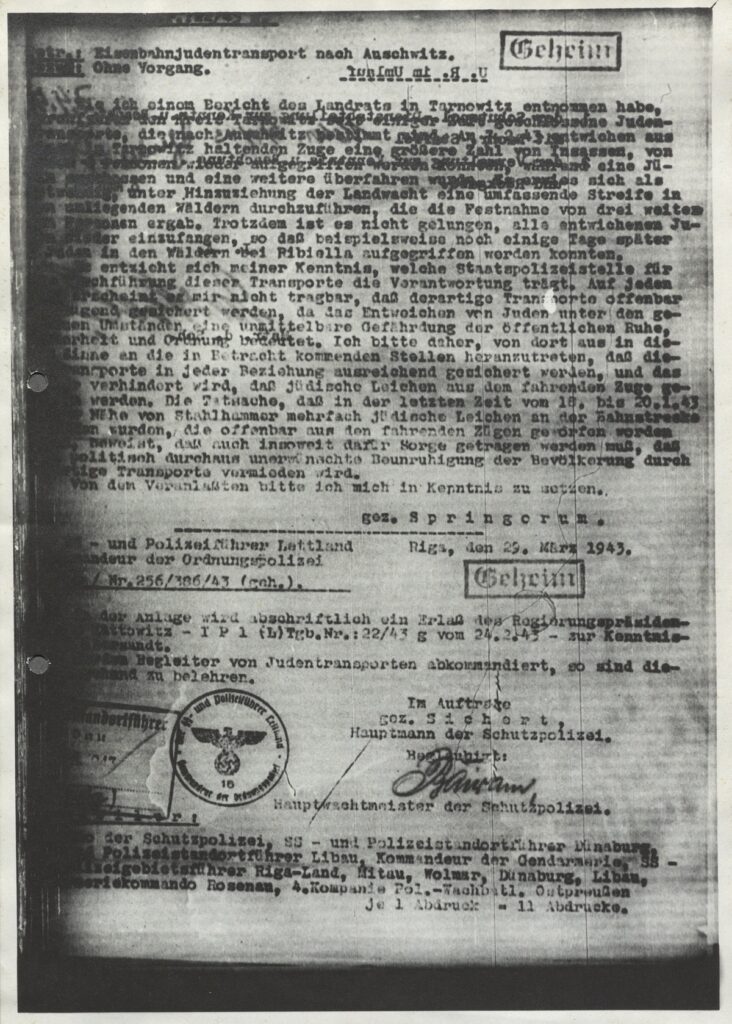1942-03-19 / German Report on “resettlement action” in Lviv, March 1942: “30,000 elderly and otherwise non-working Jews”
German military report from March 19, 1942 on the mood and conditions of the civilian population in Lemberg (now Lviv, Ukraine) located in the General Gouvernement during the Nazi occupation. The document mentions that “among the Jewish population of Lemberg, noticeable anxiety has arisen in connection with a resettlement action that has begun, by which approximately 30,000 elderly and otherwise non-working Jews of Lemberg are being gathered and, according to reports, transported to the Lublin area. To what extent this evacuation will amount to a decimation remains to be seen.” The deportations were the beginning of mass transports to the Bełżec extermination camp as part of Operation Reinhard.
